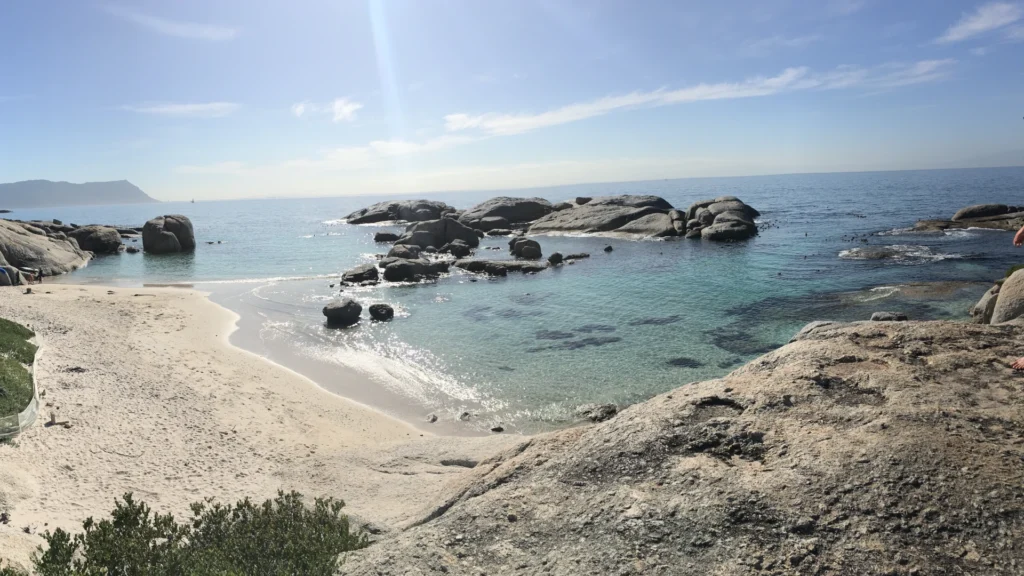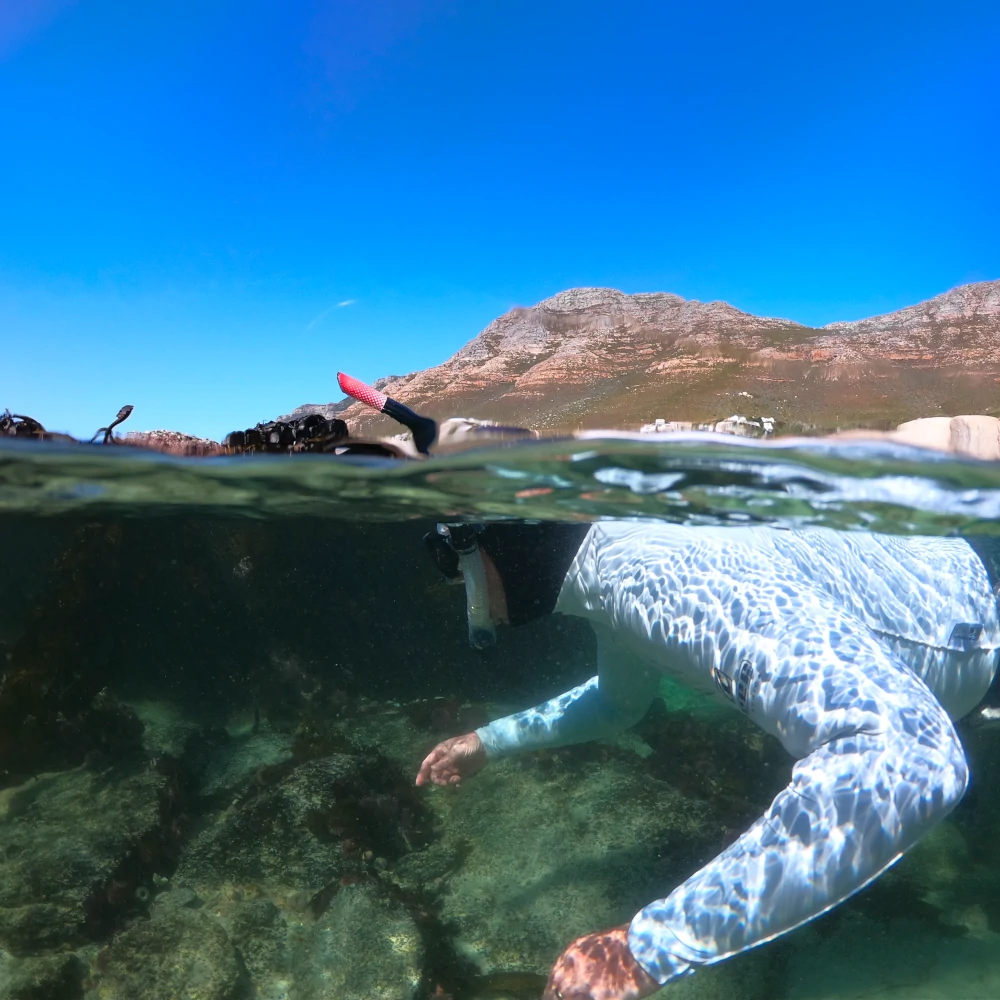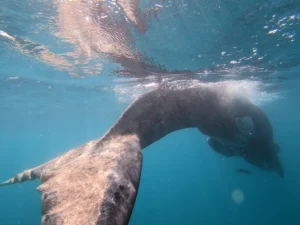With its long stretches of coastline and extensive kelp forests, the Cape Peninsula hosts a myriad of snorkeling locations, from easily accessible beginner sites to exciting caves and wrecks for the avid explorer. During the summer months in the Cape (December-February) the prevailing winds stem from the south-east, which results in offshore winds on the western side of the peninsula, known locally as the ‘Atlantic side’. The winds blow the surface water out to sea, allowing for an upwelling of cool, clear water. This results in good visibility for snorkeling! Conversely, during the winter months (June-August) the prevailing wind is from the northwest, which results in the onshore winds on the Atlantic side and offshore winds on the eastern side of the peninsula, known as False Bay. Similarly, these offshore winds in winter in False Bay result in clear waters and good visibility. The seasons therefore play a large role in choosing a site at which to snorkel in Cape Town, however there are always exceptions, and this is more of a general guideline than a hard and fast rule, so it is always worth checking the local forecast or visibility reports before heading out.
False Bay is home to a number of snorkeling sites and is revered amongst the community for its high biodiversity. Windmill Beach, located in Simonstown, False Bay, is a firm favourite amongst beginner snorkelers and experienced freedivers alike, with its soft sandy beach entry and calm sheltered channels. Windmill Beach offers a gentle introduction to the kelp forests with an open sandy bay that gradually turns into kelp-forested reef. This enables one to steadily gain confidence and explore the forest at their own pace. For the experienced snorkeler, Windmill Beach offers a thickly forested channel linking the two sides, and a swim-around the back of granite boulders for those looking to explore further afield. The site is home to a variety of marine species, and one is sure to see sea stars, sea anemones, sea urchins, many fish species and potentially even an octopus or a shy shark! The biodiversity found within the kelp forests of False Bay ensures that one is guaranteed to experience something new with each snorkel.

South of Windmill Beach lies Castle Rock, an exciting site for the more experienced snorkeler as it is accessed via a rocky entry. Both Windmill Beach and Castle Rock fall within the Table Mountain National Park Marine Protected Areas (MPA), in designated ‘no-take zones’ where the harvesting of marine resources is prohibited. This protected status combined with the natural mixing of nutrient-dense currents that takes place around the Cape Peninsula results in a high level of biodiversity and ensures exciting observations. Castle Rock MPA forms a sanctuary for fish, and one can enjoy observing Cape sea bream and red roman, amongst other species while snorkeling at this site.

The Atlantic side is recognized across the globe for its crystal-clear waters reminiscent of those found in tropical locations. Be aware however, as often the visibility is correlated with water temperature and clear can indicate cooler! It is however worth donning a wetsuit and climbing in to experience this beauty firsthand. Cosy Bay is a summer-snorkeling favourite and its sandy coves make it an easy entry point as well as a great place for the whole family to explore. A wade through the shallows offers a great sensory experience for children and those hesitant to dive in, as the rocks are home to a huge diversity of intertidal species and seaweeds of all colours and textures. For experienced snorkelers confident to explore further afield, Strawberry Rocks is found just offshore of Cosy Bay, and is home to a small colony of Cape fur seals. Despite their cuteness and playful demeanour, caution is advised when encountering any marine animal as they are unpredictable and should be maintained with respect, and no attempts should be made to touch or force an interaction.
For adventure enthusiasts, the underwater topography of the Atlantic side is not to be missed. Justins Caves are a large formation of boulders located out to the left of Cosy Bay, which offer swim-throughs, overhangs and caves. This underwater landscape is particularly magnificent on clear days and is a firm favourite on many photographers’ lists. The Atlantic side is however exposed to swell surges so one should exercise discretion and attempt to access the caves when conditions allow on calm, quiet days.

Snorkeling along the Cape Peninsula is a remarkable way to experience the beauty and biodiversity of the rich southern cape waters. With sites suited to all levels, there is truly something for everyone. If you are looking for an introduction but unsure where to start, a half-day Snorkeling Experience will equip you with confidence in the water, and proficiency in using a mask and snorkel. These experiences are not limited to beginners however, and are perfect for visiting snorklers looking for a facilitated introduction to the Cape kelp forests.



